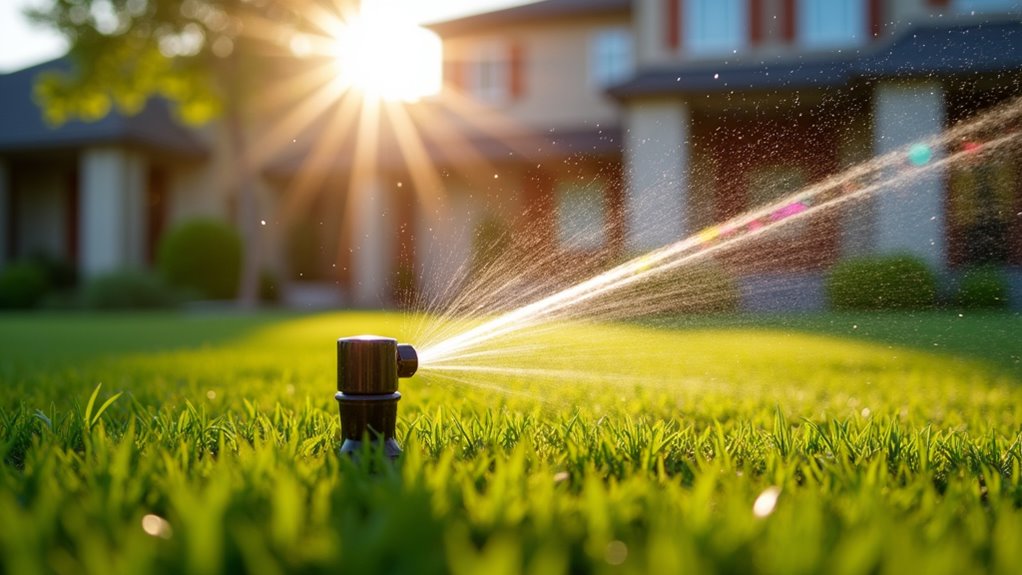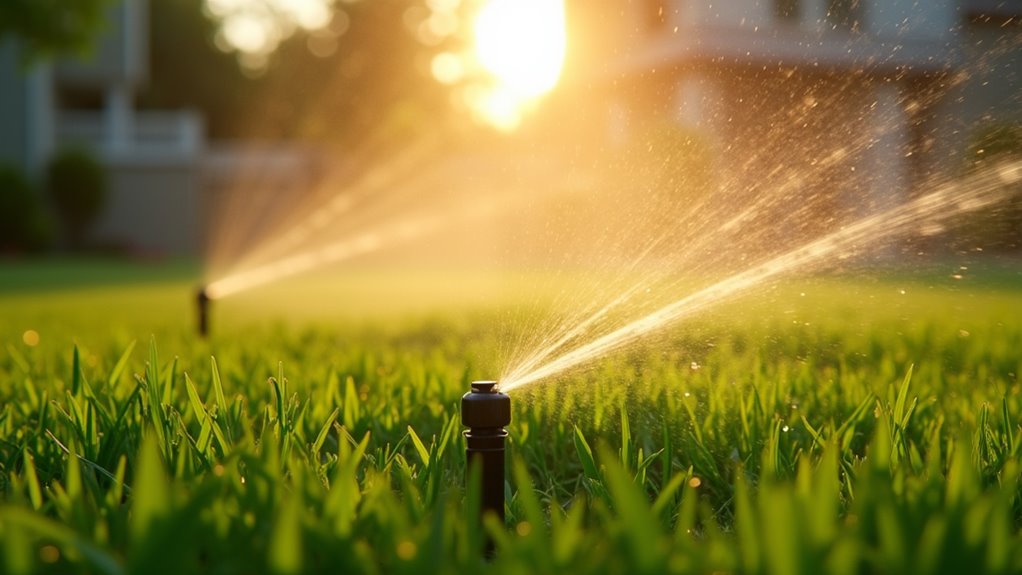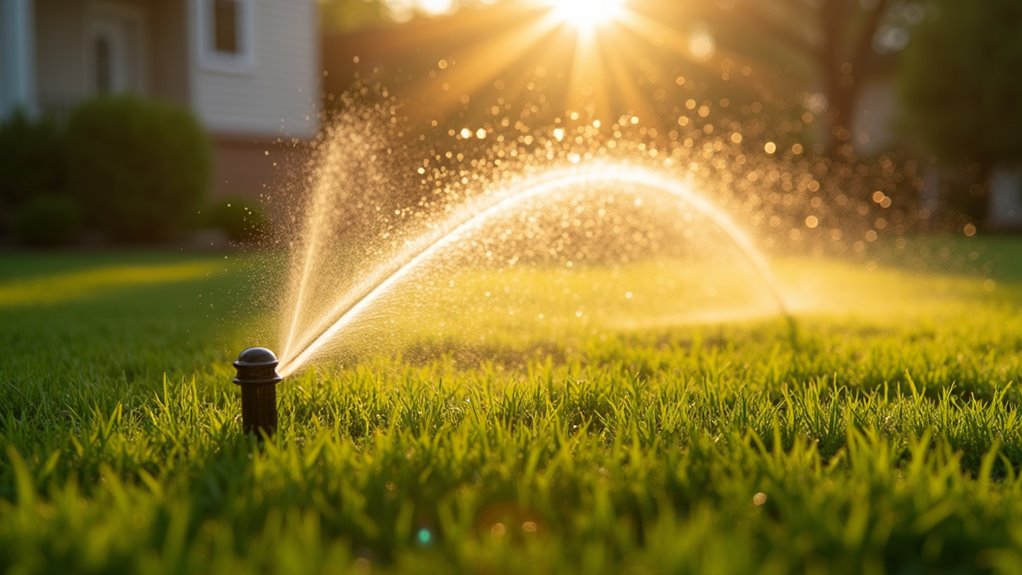To design your backyard hardscape, start by evaluating your space’s dimensions, sun exposure, and soil conditions while setting clear functional goals for entertainment and relaxation areas. Next, develop a detailed layout that optimizes traffic flow and incorporates sustainable materials like permeable pavers and recycled concrete aggregate. Ultimately, implement proper drainage solutions with a minimum 2% grade and plan for long-term maintenance requirements. Understanding these foundational principles will reveal the full potential of your outdoor transformation.
Assess Your Space and Set Clear Goals
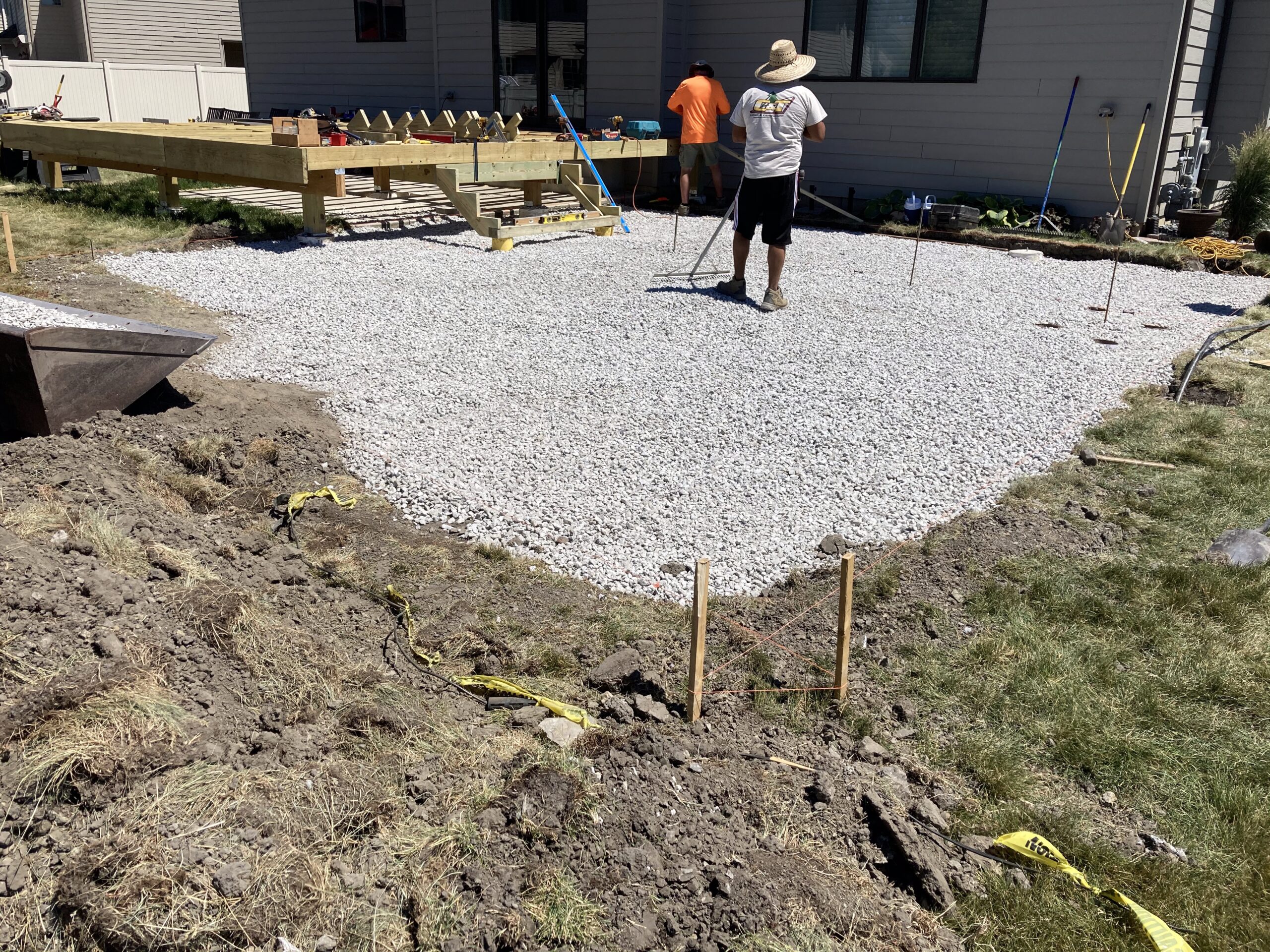
Before starting on any hardscape project, you’ll need to carefully evaluate your backyard’s existing conditions and establish specific objectives for the space. Begin your space evaluation by measuring dimensions, noting sun exposure patterns, and identifying existing features like utilities, drainage systems, and vegetation. Document soil conditions, grade changes, and potential water accumulation areas.
Your goal setting should address both functional and aesthetic requirements. Define how you’ll use the space – whether for entertaining, recreation, or relaxation. Consider factors such as traffic flow, seating capacity, and privacy needs. List specific elements you want to incorporate, like patios, retaining walls, or outdoor cooking areas. Establish your budget parameters and timeline constraints. Factor in local building codes, HOA restrictions, and environmental regulations that may impact your design choices.
Plan Your Layout and Choose Materials
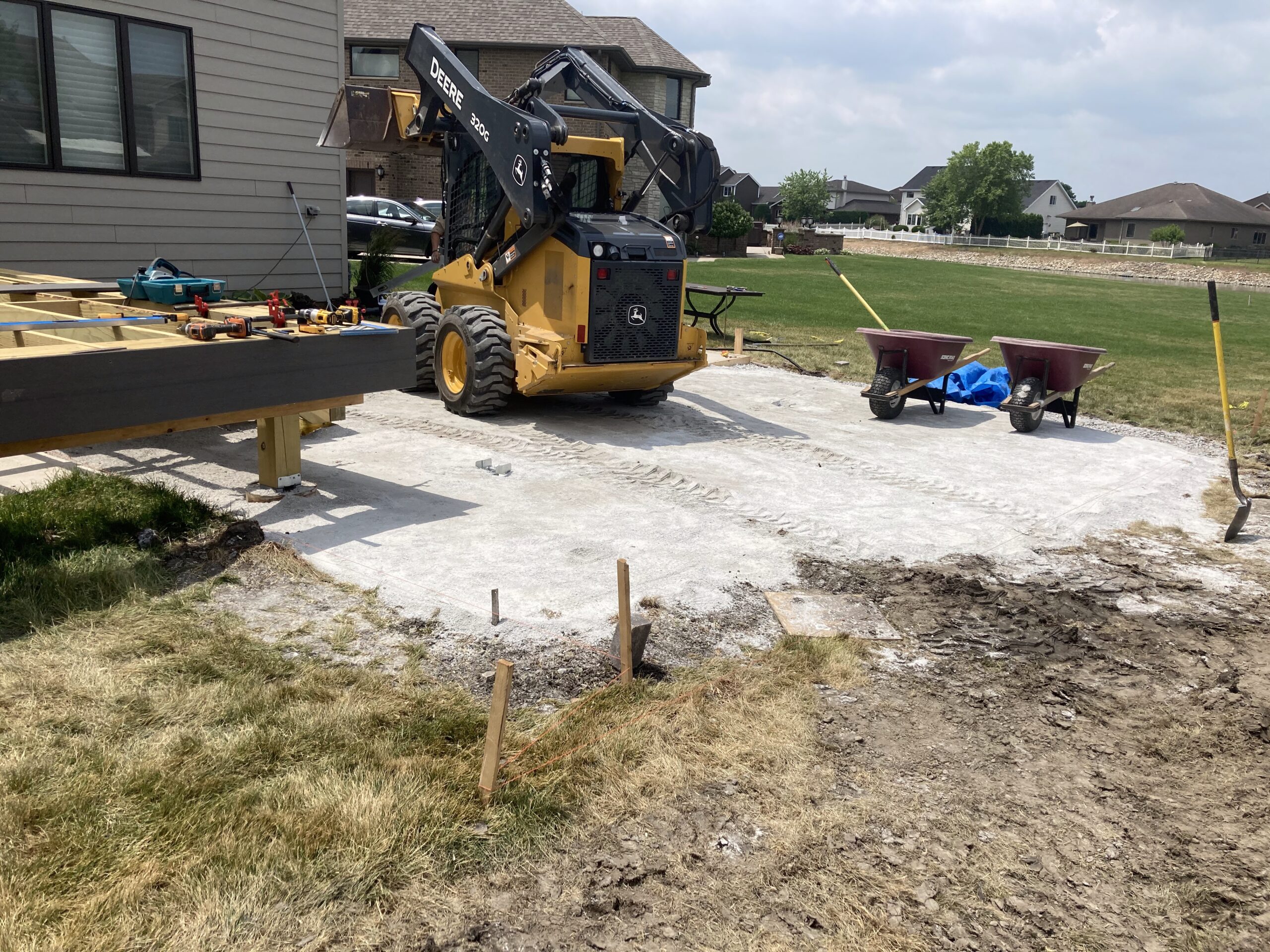
Once you’ve assessed your space and goals, translating your vision into a detailed layout requires careful consideration of both spatial relationships and material selections. Evaluate diverse layout options to optimize traffic flow, functionality, and visual appeal while keeping sustainability in mind.
Smart landscape design balances form and function, turning outdoor spaces into sustainable, livable environments that flow naturally.
When selecting material types for your hardscape, balance aesthetics, durability, and environmental impact:
- Permeable pavers that allow water infiltration and reduce runoff, ideal for pathways and patios
- Recycled concrete aggregate for eco-friendly retaining walls and foundations
- Local natural stone to minimize transportation emissions and support regional suppliers
- Sustainable composite materials for decking and architectural features that require minimal maintenance
Consider how different materials interact with existing surroundings and verify your choices align with local climate conditions and building codes.
Consider Drainage and Long-Term Maintenance
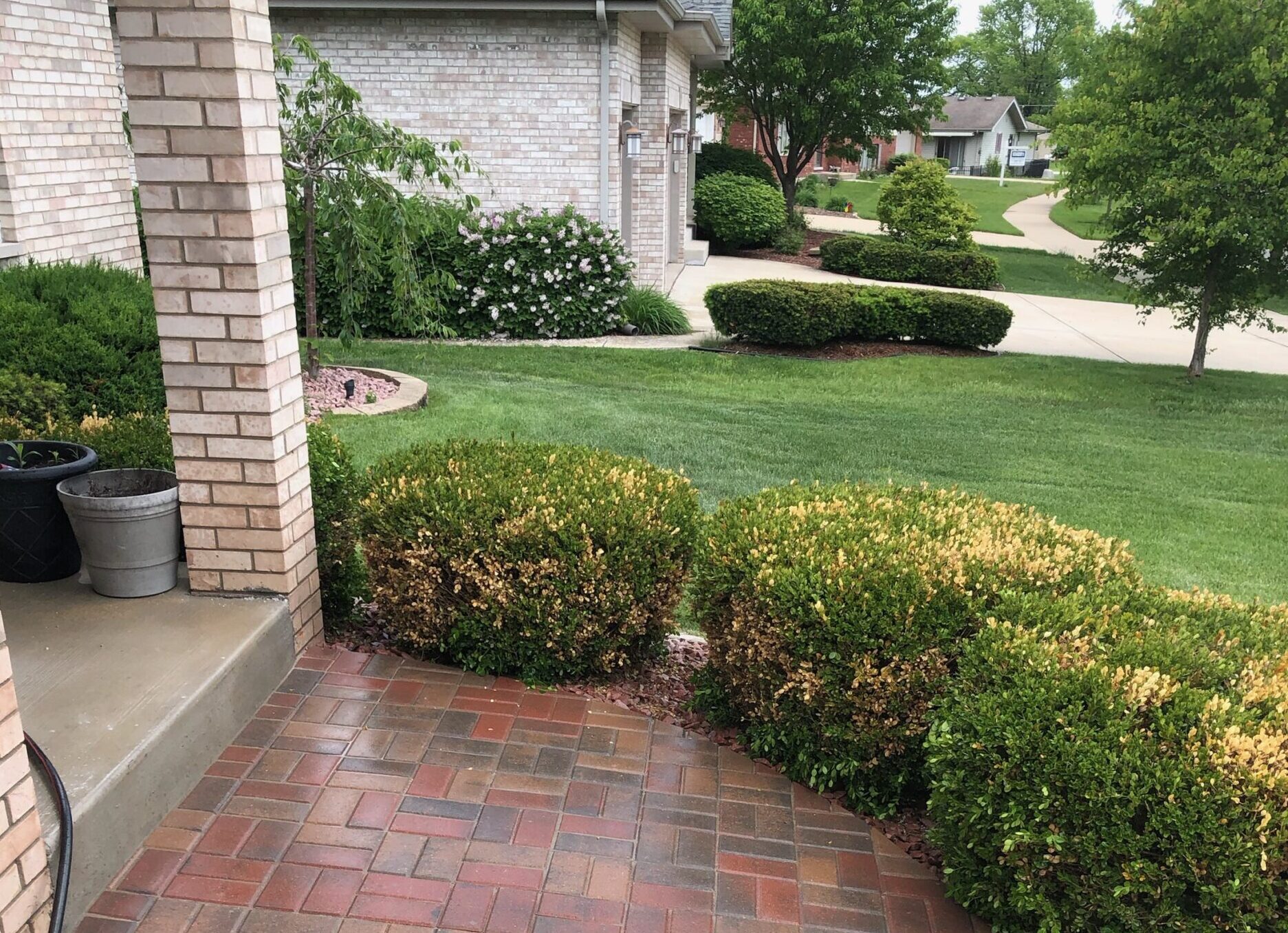
While planning your hardscape’s visual elements is essential, proper drainage infrastructure and maintenance considerations will determine its long-term success. You’ll need to integrate effective drainage solutions like French drains, permeable pavers, or sloped surfaces to prevent water pooling and foundation damage. Install catch basins at key collection points and guarantee a minimum 2% grade away from your home’s foundation.
Consider these maintenance tips to protect your investment: seal your pavers every 2-3 years, regularly inspect joints for sand loss, and promptly address any settling or shifting. You’ll also want to plan for seasonal tasks like pressure washing, weed prevention, and crack repair. Choose materials that won’t require extensive upkeep and design your hardscape with easy access for future repairs or modifications.
Frequently Asked Questions
How Much Does Professional Hardscape Installation Typically Cost per Square Foot?
You’ll typically find professional hardscape installation costs ranging from $15 to $50 per square foot, though your final price depends on several cost factors. Material choices greatly impact expenses concrete pavers average $15-25/sq ft, while natural stone can reach $40-50/sq ft installed. Your location, site accessibility, drainage requirements, and soil conditions will affect pricing. For sustainable options, permeable pavers may cost 20-30% more but offer long-term environmental benefits.
Can I Install Hardscape Features During Winter Months?
While you can technically install hardscape features during winter, it’s not ideal due to essential temperature considerations. You shouldn’t install pavers or pour concrete when temperatures drop below 40°F (4°C), as freezing conditions can affect material curing and settling. If you must proceed with winter installation, you’ll need to use specialized cold-weather concrete additives and secure proper ground preparation. Consider waiting for warmer weather to assure best results.
Do I Need Permits From My Local Municipality for Hardscape Projects?
You’ll typically need permits for hardscape projects that involve significant structural changes or affect drainage patterns. Local regulations vary widely, so it’s crucial to check with your municipality’s building department before starting any work. Permit requirements often apply to retaining walls over a certain height, extensive paving that impacts water runoff, or projects near property lines. Some areas also require environmental impact assessments to guarantee your hardscape won’t disrupt local ecosystems.
What Lighting Options Work Best for Hardscape Features at Night?
You’ll find LED lighting is your most efficient choice for hardscape illumination, offering long-lasting performance and low energy consumption. Consider installing solar options along pathways and steps for sustainable, maintenance-free lighting. Create ambient effects by positioning lights underneath retaining walls or water features for dramatic shadows. For pathway illumination, use recessed fixtures or bollard lights to guarantee safe navigation while minimizing light pollution. Remember to choose weatherproof fixtures rated for outdoor use.
How Long Should I Wait Before Using Newly Installed Hardscape Elements?
You’ll need to observe specific waiting periods before using your newly installed hardscape features. For concrete elements, wait at least 24-48 hours for foot traffic and 7-10 days for heavy furniture. Allow 48 hours after grouting for stone or brick pavers. For retaining walls, wait 7 days minimum before adding soil pressure. Following these hardscape maintenance guidelines guarantees proper curing and long-term structural integrity of your investment.

